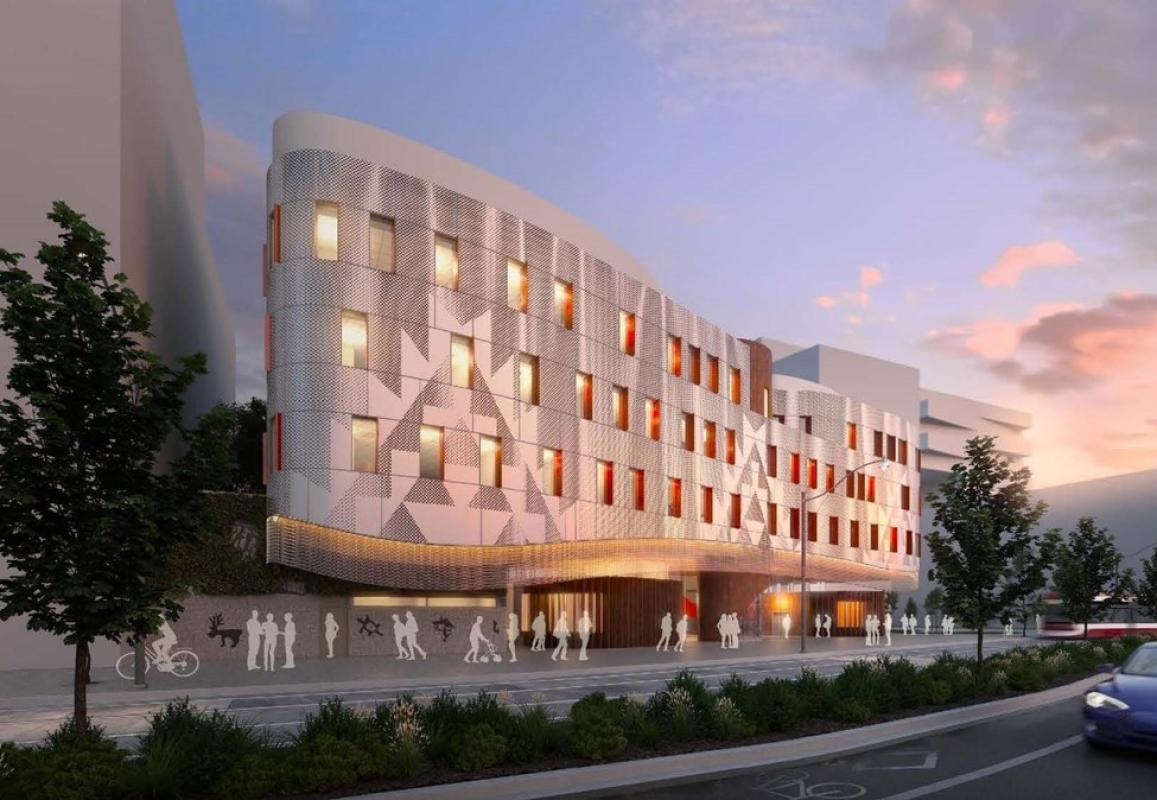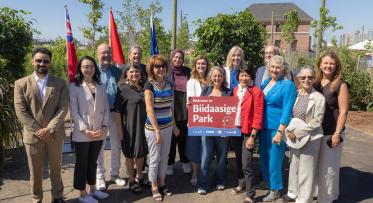Health through an Indigenous lens: Understanding Anishnawbe Health Toronto's Indigenous Hub
View of the Indigenous Hub from Cherry Street. The pattern of the traditional shawl that envelopes the building is visible in the rendering above. Image courtesy of Stantec.
POSTED: JUNE 21, 2021 | DESIGN, PARKS AND PUBLIC SPACES
BY: MATTHEW HICKEY, PARTNER, TWO ROW ARCHITECT
Our waterfront is a sacred place where land and water meet. This zone has supported life for hundreds of millions of years. Humans have only been on the Tkaronto waterfront for the past 10,000 years and we have been trying to control it (without success) for the past 200 years. We have reached a time where our actions are starting to reverse our mistakes - our actions are beginning to work with nature and not against her.
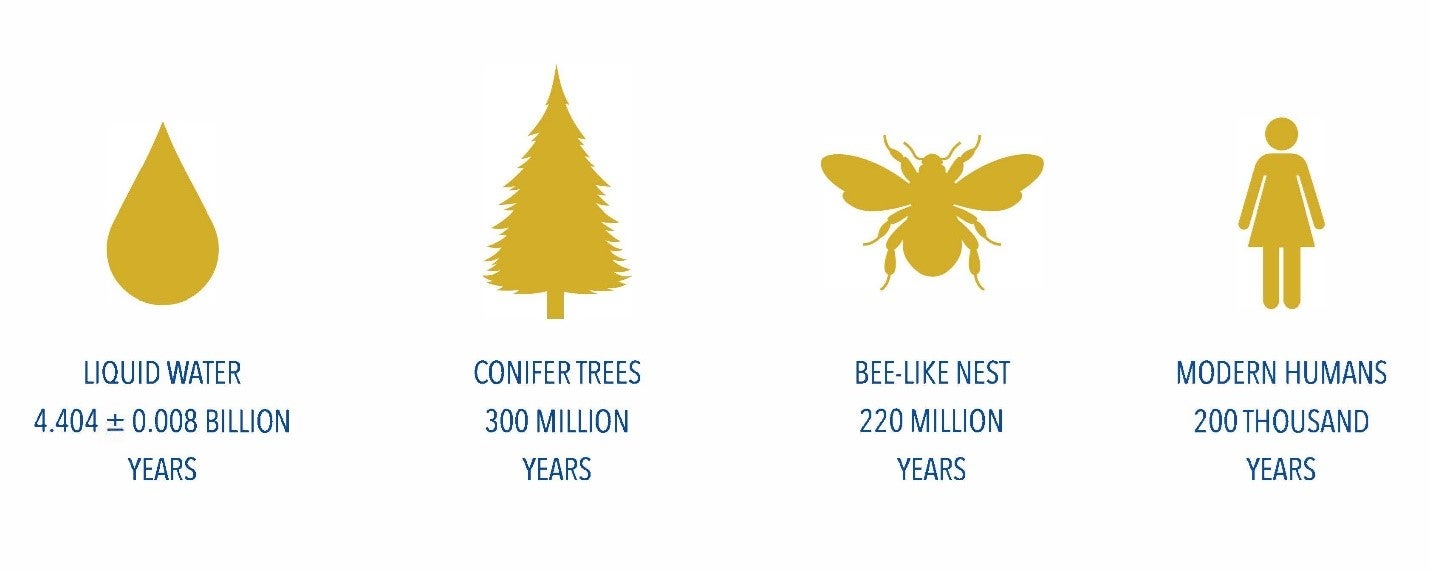
In the context of water, flora and fauna, humans have inhabited the earth for a small fraction of time, as represented in this graphic.
For thousands of years, the site on which the Anishnawbe Health Toronto (AHT) Indigenous Hub will sit has been an ever-changing landscape, affected by the interaction of the river we now call the Don, and the land. This intimate relationship formed riparian zones whose interface creates fertility for a diverse group of plants and animals. This river delta was one of the reasons numerous groups of Indigenous peoples lived on these shores since the recession of the glaciers.

The shawl pattern that wraps around the building includes a fringe motif, found in various Indigenous ceremonies and garments. The image on the left features a Jingle Dress, traditionally used to create noise during a healing ceremony. The fringe on the buckskin shirt on the right has a practical use of wicking water away to keep the garment dry.
The new location of AHT within the Indigenous Hub in the Canary District of Toronto is pushing forward this way of thinking. Land-based healing along with traditional medicines are at the forefront. Land and Water are two key elements in Indigenous ways of knowing and being that have formed the basis of architectural design and the process of creation at AHT. Our relationship to the world around us is key to our health and wellbeing. AHT places nature as an equal player in land development on the waterfront in present-day Toronto, an approach that is often overlooked by pro forma satiating developments.
Anishnawbe Health Toronto, through its design and building of spirit, intends to make occupants connect with the land on which they are standing, the sky which they are under, and aware of all their relations around them. Imbedded in a landscape with her feet firmly planted on the ground, the building, wrapped in a traditional shawl, opens her heart to the east through a three-storey atrium facing nature. Floating above a transparent ground floor, which represents an eroded riverbed, the entrance is fully transparent from front to back, allowing further connection to the ground, sky and nature.
People will enter the building below the carved form that supports the traditional healing spaces on all three upper levels. Each of these spaces will have unique interior identities related to traditional ways of building and their resultant forms; all of them featuring an embracing, round space with a unique ceiling and wall treatment. The carved Traditional Healers tower also ties all the floors together and signals their importance from the exterior of the building through to the interior.
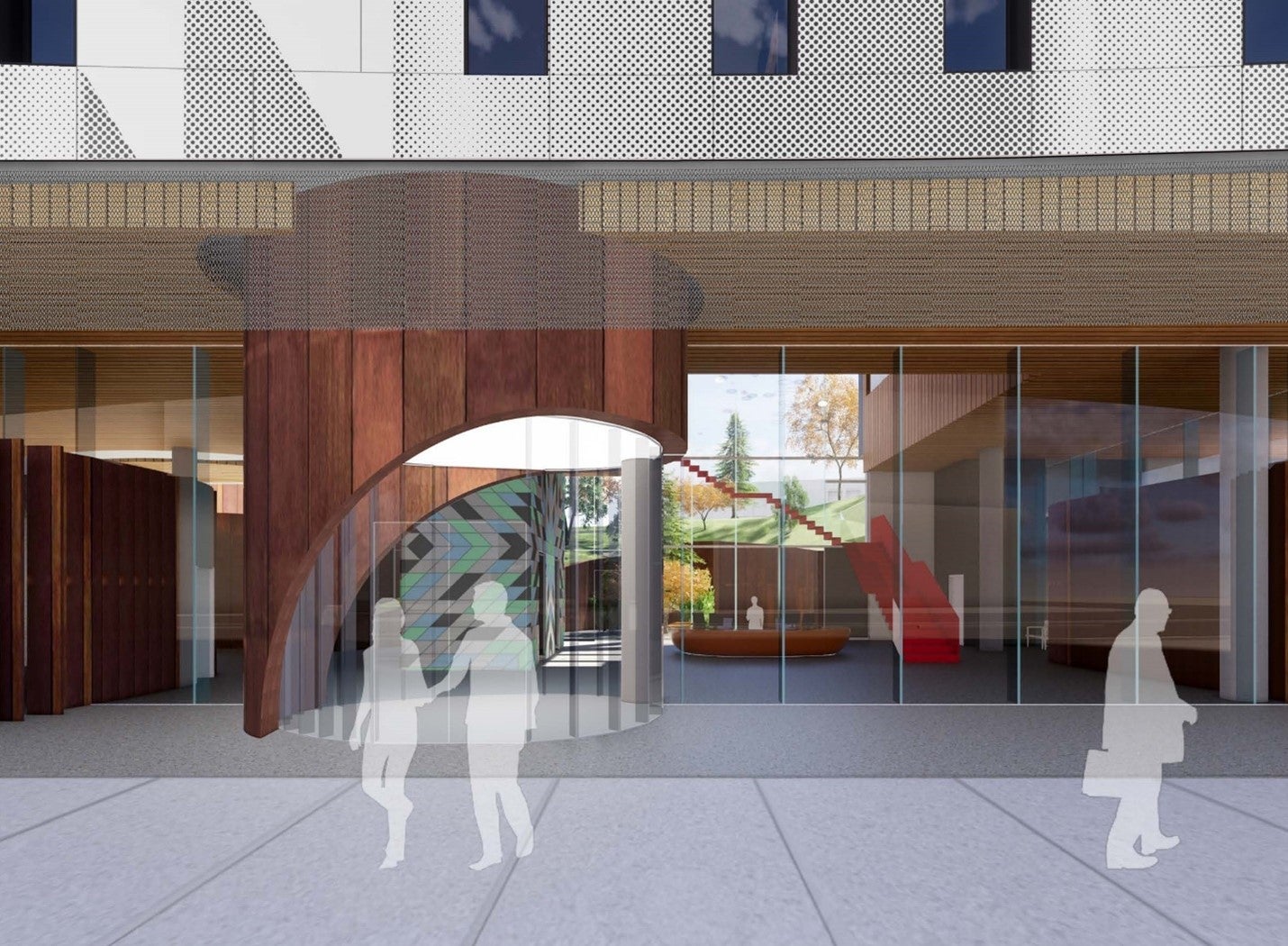
The carved form, shown above, supports the traditional healing spaces on all three levels of AHT’s Indigenous Hub. Visitors will enter the building below this tower.
Rising to the east, the atrium space opens up to three storeys and welcomes the sun of the morning. East, the direction of birth, is a key identifier that organizes circulation in the building with every elevator lobby opening visually to this vertical space. This acknowledgement of the movement of the sun is another marker of place and helps ground the Centre in the daily cycles of Mother Earth.
Thinking beyond human fragility opens our eyes to millions of species that exist without us. We have only one responsibility towards them… to treat them with care. Our actions, since the industrial revolution, have been doing just the opposite. We have been slowly and systematically destroying the world around us that we are tasked with taking care of. The joke is on us though, our relations will live on long after humans are gone; the trees will still grow and the birds will still sing. It is only by humbling ourselves to being a part of the larger system that we can benefit from the healing properties on the land and water around us.
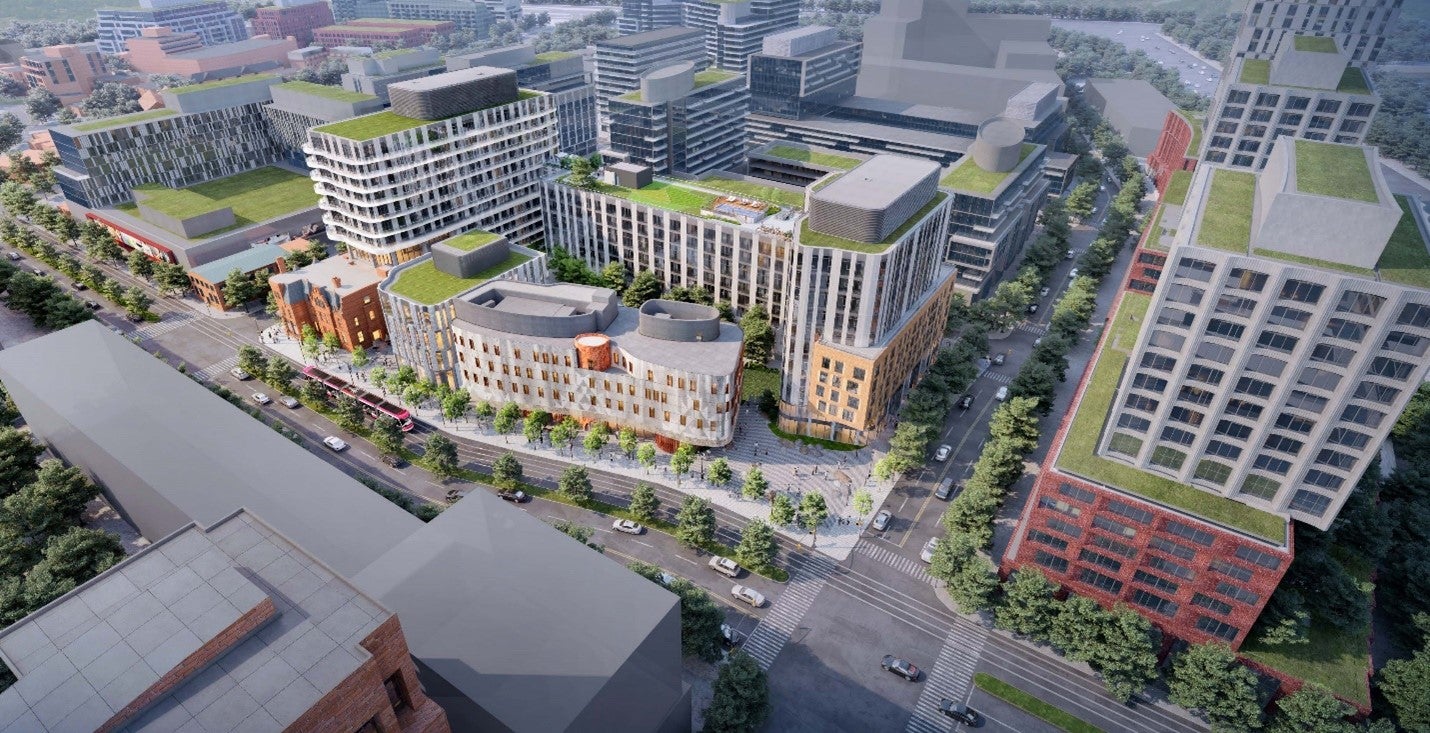
Once complete, the Indigenous Hub and surrounding areas will be a focal point for the surrounding community.
With a goal of creating complete communities, Waterfront Toronto has unlocked the area surrounding this future Indigenous Hub, providing flood protection, creating parks and public spaces and increasing access to transit. The Indigenous Hub will further complete the community, creating a space to honour and acknowledge tradition while serving as a reminder of the work that must continue.
Follow us on Twitter, Facebook, Instagram and LinkedIn for the latest updates on waterfront revitalization.

